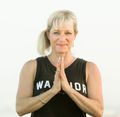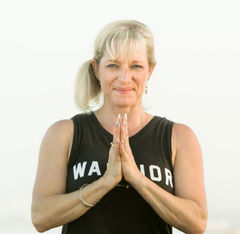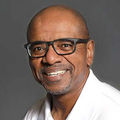Many of us find that we are called to serve others, and our communities, through the unique experiences of our lives, and I am no different. My world changed after an accident fractured my back and herniated a disc. I found myself crippled with pain and stripped of my freedom to move. Through the use of strength training, stretching and embracing and anti-inflammatory nutrition plan, I fully recovered and fell in love with the empowering mind-body benefits of exercise and their impact on others.
My experiences propelled and shaped my “why,” as I imagine they have yours. While we may be unique in our experiences, we are united in our commitment to others through the power of evidence-based health and wellness approaches. My expertise, “calling” if you will, cultivates a life of possibility within women, families and children from a whole-person, body-mind-spirit perspective. A growing area in my practice has continued to be, integrating the essential elements of mindful yoga and other mindfulness protocols into mindfulness-based interventions.
How have your life experiences shaped your call to serve others and your why? Investing time to discover and/or deepen your understanding in this area will shape your intention. Your intentions set the stage for what is possible. Even during uncertain times, when we choose to live in the possible, and step through the door of our experiences into a life of intention opportunities will arise. I had such an experience when I was approached by a middle school teacher whose students and families struggled with increased anxiety and emotional distress due to being quarantined and “going to school” online. We know this is a growing area of need, as a recent article in the Lancet points out, school routines are important coping mechanisms for young people with mental health issues. When schools are closed, they lose an anchor in life and their symptoms could relapse. Having the opportunity to show up and be of service, especially to children and families, is joyful.
Here is how it worked for me and may work for you in your community:
- Due to various restrictions and to reduce barriers to delivery forgo doing a live video meeting, such as Zoom, and simply film your video and use a link, such as YouTube, to deliver your video, as opposed to a large video file.
- Ensure you are designing your “solution” using evidence-based tools through which you are experienced, trained, certified.
- Briefly introduce yourself, acknowledge and welcome your audience in an accepting way and share what will be doing and how it may benefit them.
- My solution (mindfulness & breathing tools for stress reduction) was delivered by walking them through 3 breathing techniques (belly, ujjayi, and chest) in 3 body positions (sukhasana, savansana, and astronaut pose) and a mindful body scan.*
The response was overwhelmingly positive, and we are now in talks to roll more mindfulness-based solutions to the other schools within the district.
One parent said, “I think that for all of us this time is very, very difficult. Kids understand more than we give them credit for, but at the same time, may have questions that they are afraid to ask so they come up with their own answers and that can be so much more frightening. Now, more than ever, mindfulness, being present in the moment, breathing and focusing is so extremely important to help us face each day. Beth’s video helped us relax and focus and calm our bodies down. It reminded us to stop and breathe and slow down and that being mindful helps ease stress and by doing a simple pose as the Astronaut, it can truly eliminate what is creating unrest.”
*Definitions
3 Breathing Techniques
Belly Breathing: Place one or two hands on your belly while in any body position. Find a connection to your belly and relax by closing your eyes, softening your jaw and brow. As you inhale through your nose, let your belly fill up with air, rise and round out and as you exhale out through your nose allow your belly to fall.
Ujjayi Breathing: Ujjayi meaning “victorious breath” is done in and out through the nose allowing you to stay present to your breath because you can hear the sound of breath. Ujjayi breath can be used with belly and chest breathing. Connect to your Ujjayi breath anytime to calm and center yourself.
Chest breathing: In any body position and perhaps with your hand connected to your heart, breath in through your nose, fill your chest up completely and as you exhale out through your nose, allow your chest to fall. Alternate belly breathing and chest breathing if you choose and this can be done in Sukhasana, Savasana or Astronaut pose.
3 Body Positions
Sukhasana (easy pose): Sit on a yoga mat, blanket or yoga pillow (sometimes called a zafu) with legs crossed over in lotus.
Savasana: Lying on your back, position your arms/hands in whichever way feels best for you: with your arms by your side and palms facing up or above arms above head and palms facing up or left hand on your heart, right hand on your belly.
Astronaut Pose: Lying on the floor on your back with legs folded over a chair or ottoman. Your hands can be on the floor palms up or left hand on your heart and right hand on your belly.
Mindful Body Scan: This can be done in any body position. As you relax the body and begin Ujjayi breath start at your feet and work to the top of your head, acknowledging and focusing on each body part. Feet, ankles, calves, thighs, hips, buttocks, belly, spine, chest, fingers, arms, shoulders, neck, head. Then work back from top of your head to bottom of feet with the same acknowledging focus on each part.




 by
by 





 by
by